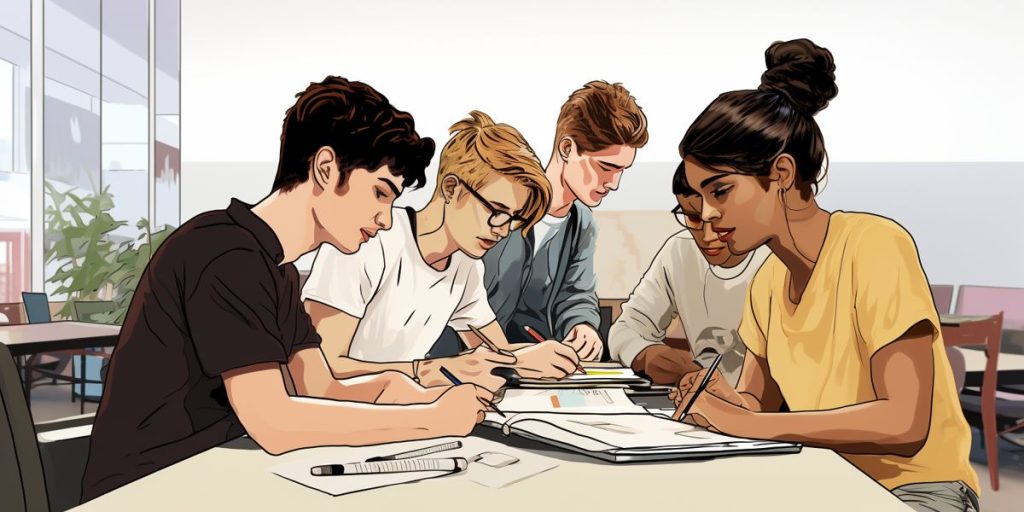Cypriot children face educational challenges in key subjects as evidenced by the 2022 PISA report. They scored below the EU average in mathematics (418), science (411), and reading (381). These scores indicate a need for systemic improvement in Cyprus’s education system to enhance students’ competencies in these crucial areas. The education ministry has recognized this need and outlined strategies for improvement, including the development of core competencies, the integration of technology, and aligning educational objectives with the needs of the labor market.
What are the educational challenges faced by Cypriot children according to the PISA report?
Cypriot children face educational challenges in key subjects as evidenced by the 2022 PISA report. They scored below the EU average in mathematics (418), science (411), and reading (381). These scores indicate a need for systemic improvement in Cyprus’s education system to enhance students’ competencies in these crucial areas.
Assessing Performance: The PISA Report Overview
Cypriot children displayed below average competencies in the 2022 report of the Programme for International Student Assessment (Pisa). A tool that surveys 15-year-old students across the globe, Pisa evaluates the proficiency of these students in essential academic areas: mathematics, reading, and science. The findings, revealed at the education ministry, brought to light areas where Cypriot students lag behind their international counterparts.
In mathematics, Cypriot children scored an average of 418 points, trailing the European Union average of 472 by a significant margin. The domain of science revealed a similar situation, with Cypriot students achieving an average score of 411 points, overshadowed by the EU’s average of 480. The reading scores continued this trend, with an average of 381 points compared to the EU’s 468.
Comparative Performance: Cyprus Versus Other Countries
The comparison extended beyond the EU, as Cypriot children’s scores were juxtaposed with those of students from neighboring countries. Turkey and Greece outperformed Cyprus with higher average scores in all three assessed areas. Even countries like Vietnam, Brunei, Ukraine, and Mongolia surpassed Cypriot scores. However, Cyprus did manage to edge out Bulgaria by a single point in mathematics.
The gender gap also followed the global pattern—girls in Cyprus outperformed boys in all three categories. This mirrors a wider trend seen across different education systems. Interestingly, the disparity in achievement between children from varied socioeconomic backgrounds in Cyprus was narrower than the EU average, pointing to a somewhat more equitable educational landscape in the country.
Ministry’s Response: Strategies for Improvement
In light of these sobering results, the education ministry recognized the need for change and articulated a multi-tiered strategic response. They emphasized the development of core competencies like critical thinking and creativity among pupils. The ministry plans to refine the examination systems for both students and teachers, move towards extending school hours, and reinforce pre-primary education.
The prevention of bullying and violence in schools is also on the ministry’s agenda, alongside the integration of modern technologies into learning environments. They aspire to foster a better connection between the education system and the labor market, which could pave the way for a more robust and skill-oriented educational framework.
Technological Integration and Labor Market Alignment
The ministry’s forward-looking strategy includes utilizing modern tech to enhance educational outcomes. By embedding technology into the curriculum, the aim is to make learning more interactive and relevant to the digital age. Additionally, aligning educational objectives with the needs of the labor market is anticipated to equip students with the skills necessary for future employment, bridging the gap between education and practical application in the workforce.
In conclusion, the ministry’s proactive stance in addressing these educational challenges presents an opportunity for systemic improvement. As Cyprus works towards uplifting its educational standards, the global community watches, hopeful for the country to rise to the occasion and provide its future generations with the tools for success.
1. What were the findings of the 2022 PISA report regarding Cypriot children’s educational performance?
Cypriot children scored below the EU average in mathematics (418), science (411), and reading (381) according to the 2022 PISA report. These scores indicate the existence of educational challenges in these key subjects and highlight the need for improvement in Cyprus’s education system.
2. How does Cyprus’s educational performance compare to other countries?
When compared to other countries, Cypriot children’s scores were lower than those of students from neighboring countries like Turkey and Greece, as well as countries like Vietnam, Brunei, Ukraine, and Mongolia. However, Cyprus did outperform Bulgaria by a single point in mathematics. The gender gap followed the global pattern, with girls outperforming boys in all three subject areas.
3. How does the education ministry plan to address these challenges?
The education ministry has outlined a strategic response to address the educational challenges. They aim to develop core competencies such as critical thinking and creativity among students. The ministry plans to refine examination systems, extend school hours, reinforce pre-primary education, and work towards preventing bullying and violence in schools. Technological integration into learning environments and aligning educational objectives with the needs of the labor market are also part of their strategy.
4. How does the ministry plan to integrate technology and align educational objectives with the labor market?
The education ministry aims to integrate modern technologies into learning environments to make education more interactive and relevant to the digital age. They also aspire to align educational objectives with the needs of the labor market to equip students with the skills necessary for future employment. This includes bridging the gap between education and practical application in the workforce.

